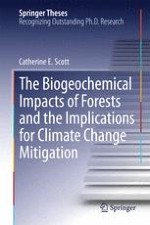2014 | OriginalPaper | Buchkapitel
3. The Impact of Biogenic SOA on Particle and Cloud Condensation Nuclei Concentration
verfasst von : Catherine E. Scott
Erschienen in: The Biogeochemical Impacts of Forests and the Implications for Climate Change Mitigation
Aktivieren Sie unsere intelligente Suche, um passende Fachinhalte oder Patente zu finden.
Wählen Sie Textabschnitte aus um mit Künstlicher Intelligenz passenden Patente zu finden. powered by
Markieren Sie Textabschnitte, um KI-gestützt weitere passende Inhalte zu finden. powered by
